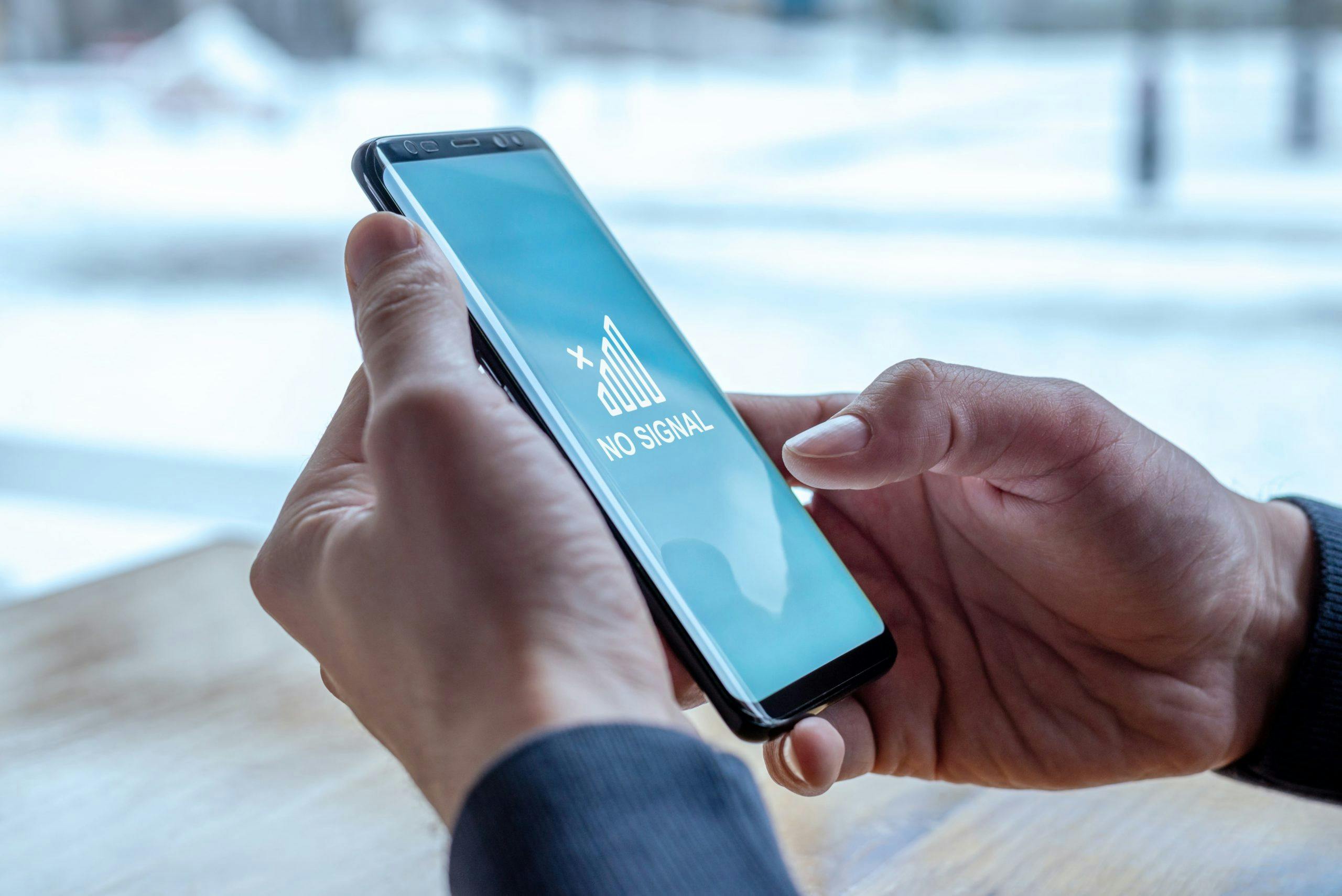Home


Resource Center
Many large office buildings were constructed decades ago, back when mobile phones were either unheard of or relatively uncommon. You may have noticed that such buildings frequently have poor cell signal throughout and spots where there is no signal at all. As a building owner, you may even receive complaints about this and find yourself wondering how to improve the cell signal coverage for your tenants.

Being connected is an essential part of modern life. Office tenants need to have a good signal for their calls and mobile devices. Weak signals make it difficult for office workers to do business and present difficulties and frustrations for tenants and visitors.
Why Cell Signals Are So Crucial for Businesses
Mobile devices are vital for most businesses today. Landlines and intercoms, while still present in some buildings, are not the ‘go-to’ devices they once were — in fact, they’re on their way to extinction. More than ever before, communication takes place over messaging apps and on mobiles and tablets.
Software and cloud computing form the backbone of our modern business infrastructure, with many businesses depending on services from the following companies:
- Skype
- Slack
- Trello
- Google Apps
- Microsoft Office 365
- Salesforce
A loss of connectivity to those apps can massively hinder the productivity of a business.
While a poor signal can be worked around to an extent, a business’s own internal Wi-Fi connection may not be available to customers or clients who visit your tenants’ businesses. So, if they need to receive an SMS or quickly look up some details as a part of making a deal, they will struggle to do so without good cellular connectivity.
Guest Wi-Fi presents something of a workaround, but one with its own issues — not all phones have Wi-Fi calling, for example, and there are security and data protection considerations that not all companies may feel confident addressing.
Reliable connectivity is even more important in B2C environments (such as hospitality). Hotel guests and restaurant patrons expect to be able to communicate with the outside world while on the property. Offering a good mobile experience is an important part of the service those businesses provide.
What Causes Cell Phone Dead Zones?
There are two major causes of cell phone dead zones in an office setting: the building’s proximity to one or more cell towers, and the materials used in the construction of the building itself.
Cell phone signals are transmitted from towers and travel through the air to your phone. Most cities have cell phone towers dotted across the landscape, so a mobile device user in a city should never be too far away from a tower. As such, it’s much more common for the cell phone dead zones that exist in rural areas to be caused by a lack of towers in the area. There’s little point in a mobile provider building a tower to cover one or two farmhouses.
In cities, the main reason for a ‘dead zone’ is likely to be the building itself. Thick building materials, especially concrete and steel, can stop a cell signal from penetrating a building. Even insulated glass can be enough to impair signal strength. Obstructions such as trees, mountains and other buildings can impact the quality of the signal your tenants receive.
This means if your building is not located close to a tower, cell strength could be poor. Old buildings have thick walls that often cause problems, but new buildings are not immune to issues either. Many modern, highly energy-efficient buildings are so thickly insulated that they become impenetrable to drafts and mobile phone signals. These causes are not mutually exclusive; it may be a combination of poor proximity construction materials that’s creating coverage issues within a building.
How Bad Is Your Building’s Cell Signal Strength?
Before you can improve your cell phone signal, figure out which parts of your building have the best and worst signal. To do this, don’t just look at the bars shown on your phone — those bars aren’t standardized between providers or device manufacturers, so the readings they provide are unreliable for more practical applications.
Instead, use your phone’s field test mode to get a measure of signal strength. Both Android and iOS devices have this mode available in their Settings sections.
Survey some of the building’s users to find out if there is a commonality between those who are having issues. If the issues are limited to users of a specific network, this is at least something you can warn prospective tenants about. In addition, issues in a specific room can be spot fixed more easily than a building-wide problem.
Once you have your building’s weak signal spots mapped out you can have a professional carry out a full survey using a signal meter. These meters display several factors, including:
- Signal frequency
- Bandwidth
- Strength
Boosting A Bad Signal
After you have found the problem areas, the next step is to augment the signal in those areas. There are some DIY signal boosters on the market that may be useful if all you want to do is improve the strength in one meeting room, for example.
If, however, you’re hoping to boost cell signal across the whole of the building, this may require a more sophisticated solution. Working with cell phone signal boosting experts like the professionals at WilsonPro can help you improve the stability and strength of signals across the building for your tenants.
There are some DIY efforts worth looking into that may help you improve your signal at the office. However, if you’re dealing with a particularly troublesome issue with respect to cell service across an entire department, floor or building, then you’ll want the help of an expert.
It can take some time for an expert to complete their survey of the property and install the required cell signal boosting equipment. In the short term, there are a few options that can help you cope with poor signals:
- Reset the phone to force it to try to reconnect.
- Try to take calls in other rooms or near a window, where signal may be better.
- Use a Bluetooth headset and take calls by leaving the phone in a spot where there’s good signal. This gives you freedom to walk around.
- Enable Wi-Fi calling (provided the phone supports it).
These options may all serve as a short-term stopgap for poor signals. However, they are not ideal for tenants. Of the above options, Wi-Fi calling is the most viable workaround doesn’t inconvenience the user that much once it’s set up, but it’s not without its flaws. With Wi-Fi calling, there’s always the risk of a call being dropped if the user moves out of range of a Wi-Fi router or if they’re taking a call while entering or leaving the building.
With even the most reliable workarounds having, you can see why it’s so important to find a systemic, long-term fix.
Cell phone boosters work best if there’s good signal outside the building and weak signal inside. If the signal is poor outside, too, this most likely means the building is a long way from the nearest cell tower. That presents its own challenges and may require a more sophisticated solution.
DAS Technology for Boosting Cell Signals
DAS solutions capture the cell signals from outside the building—ensuring all tenants benefit from a strong signal. Using passive DAS technology, it’s possible to provide a strong signal in even the most challenging office buildings.
The WilsonPro passive DAS technology is carrier-agnostic—this means all building users can benefit from increased signal strength, as long as there is a signal to amplify. DAS is flexible, affordable and a reliable choice for busy offices in cities with lots of popular mobile providers. The technology can be installed quickly and can benefit all users.
The technology is particularly useful in areas where 5G rollouts are now occurring. Because 5G signals are so high frequency, it’s likely they’ll face even more problems with signal decay when penetrating building materials. Signal amplification is even more important for those who want to make use of high-speed signals.
Signal amplification can make office life better for your tenants in many ways:
- Better voice call quality
- Fewer dropped calls
- Better data connection speeds for browsing and app/SaaS use
- Longer phone battery life (since the phone is not forced to constantly search for a signal)
If you’d like to learn more about how WilsonPro cellular amplifiers work, simply get in touch to schedule a demonstration in your building. That way, you can see for yourself how much the signal amplifiers can help.
Providing your tenants with a more reliable data connection allows them to run their business more efficiently. This leads to better tenant satisfaction and better retention rates over time.
Contact WilsonPro today to learn more about our cell signal boosting solutions and how we can help you improve the signal quality for your business.

